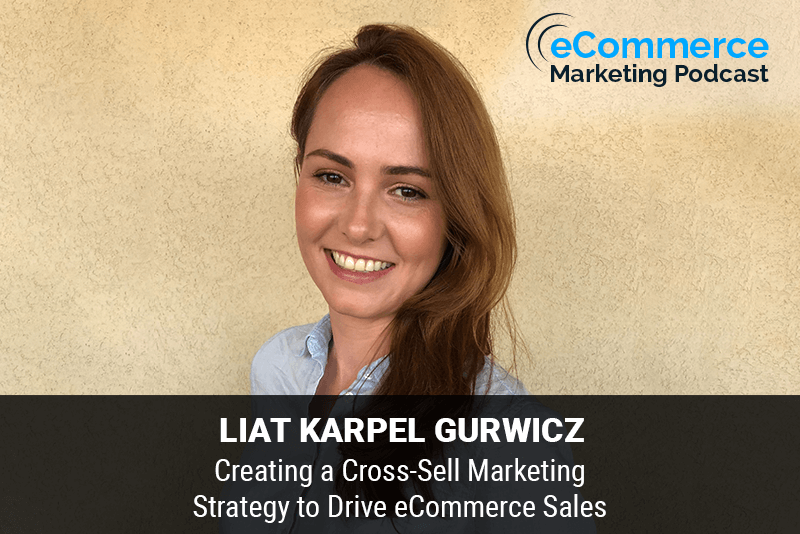
The eCommerce Marketing Podcast walks you through everything that goes into ecommerce marketing — from inbound marketing to paid advertising to conversions. Learn the strategies top marketing experts use to grow their businesses.
Marketing Strategies Revealed in this Episode:
- What is cross selling and why is it essential when looking to increase the Average Order Value from each customer
- What are basic tactics to cross promote and sell additional products and services
- How does a business know when to draw the line when deciding how many products and services to cross promote and sell?
- What ecommerce businesses have done a great job cross promoting additional products and services and what specific things have they done to be successful?

Host: Arlen Robinson
Guest: Liat Karpel Gurwicz, Head of eCommerce Marketing at Wix.com
Summary: In this engaging episode of the E-commerce Marketing Podcast, Arlen Robinson interviews Liat Karpel Gurwicz, Head of eCommerce Marketing at Wix.com. Liat shares her expertise on creating effective cross-sell marketing strategies to boost e-commerce sales. She delves into the differences between cross-selling and upselling, the importance of understanding customer needs, and provides actionable tips for businesses to implement these strategies. Liat also highlights successful case studies and emphasizes the role of automation in enhancing the customer experience and increasing sales.
Key Takeaways:
- Introduction and Background [00:00]
- Liat’s journey in tech and her role at Wix.com [02:00].
- Understanding Cross-Selling and Upselling [04:00]
- Definition and differences between cross-selling and upselling [05:30].
- Importance of providing value to customers [06:30].
- Basic Tactics for Cross-Selling and Upselling [08:00]
- Analyze customer data to understand buying patterns [09:00].
- Grouping products and creating bundles [10:30].
- Offering related items on product pages [11:30].
- Example of a 43% increase in sales by displaying related items [12:00].
- Implementation Strategies [14:00]
- Utilizing e-commerce platforms and apps for cross-selling and upselling [15:00].
- Importance of live chat for personalized recommendations [17:00].
- Example: Stores with live chat generate 71% more sales [18:00].
- Fine Line Between Effective Cross-Selling and Overwhelming Customers [21:00]
- Ensuring smooth checkout process without causing friction [22:00].
- Strategies to reduce shopping cart abandonment [23:00].
- Automation and Personalized Marketing [25:00]
- Setting up automations for abandoned cart recovery and repeat purchases [26:00].
- Example: Automated email for repeat purchase of consumable products [27:30].
- Case Studies of Successful Cross-Selling and Upselling [30:00]
- RubyLove: Effective use of bundles and smart checkout cross-sell [31:00].
- Coal and Canary: Seasonal bundles and personalized gift options [32:00].
- Forged to Table: Tailored newsletters and segmented offers [33:30].
- Closing Fun Fact [35:00]
- Liat’s online shopping habits and the importance of conscientious shopping [36:00].
Guest Info:
- Name: Liat Karpel Gurwicz
- Position: Head of eCommerce Marketing at Wix.com
- LinkedIn: Liat Karpel Gurwicz
- Twitter: @liatkarpel











